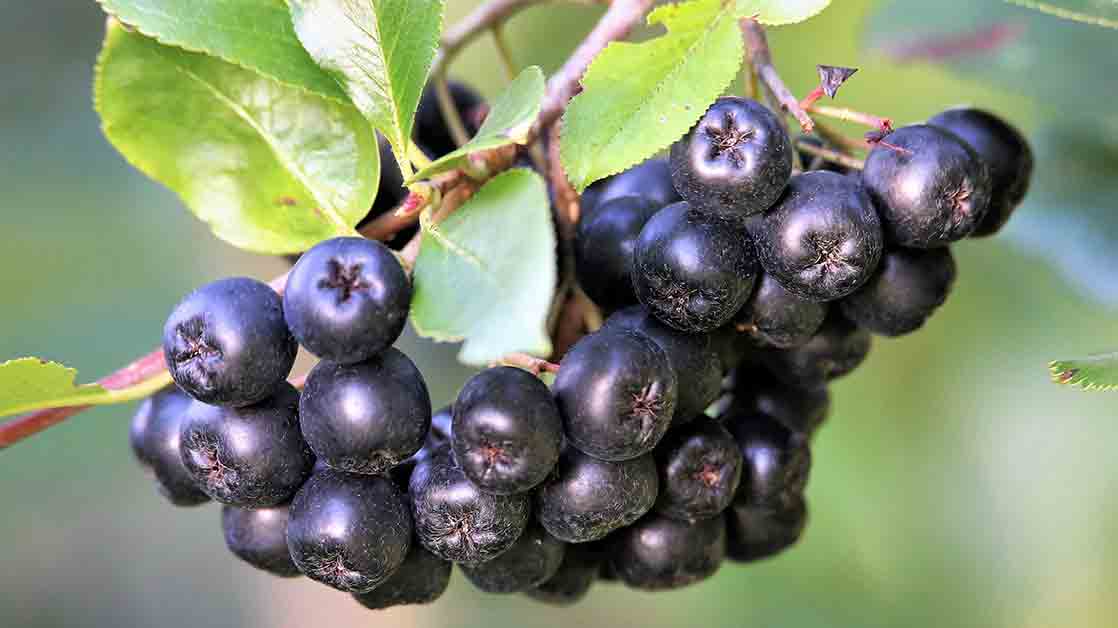Aronia
Overview
The antioxidant rich black chokeberry (Aronia melanocarpa) has been gaining popularity for use in nutraceutical products and processed foods and drinks. The highly astringent berry is native to eastern North America and was used for food and medicine by the Potawatomi and Abnaki Native American peoples (Moerman 1998). Commercial Aronia production in Northern and Eastern Europe exceeds 60,000 acres (Hannan 2013), while the U.S. industry is small but increasing. The species is well suited to cultivation in the northern Great Plains and Rocky Mountains and may be of potential interest to berry growers in the region. The aim of our research is to determine which varieties of Aronia perform best in western Montana and their potential to be productive and profitable for commercial endeavors. Thus far we can say that varieties of Aronia mitschurinii (A.K.A. Sorbaronia mitschurinii)—a cross between Aronia melanocarpa and European Mountain Ash (Sorbus aucuparia)—are much more productive than the ornamental varieties (e.g., 'Autumn Magic') derived from wild-type A. melanocarpa (Tables 1 and 2).
Results
| Cultivar | Yield (lbs/plant) | Individual Fruit Weight (g) |
Sugar (°Bx) | ||||
|---|---|---|---|---|---|---|---|
| 2017 | 2018 | 2019 | 2020 | 2021 | |||
| Autumn Magic | 1.8 | 2.4 | 3.9 | 3.3 | 1.2 | 0.6 | 24.3 |
| McKenzie | 2.7 | 16.8 | 16.7 | 21.2 | 8.1 | 1.1 | 18.9 |
| Viking | 3.3 | 15 | 11 | 16.1 | 8.6 | 0.9 | 17.4 |
| Cultivar | Yield (lbs/plant) | Individual Fruit Weight (g) |
Sugar (°Bx) |
|---|---|---|---|
| McKenzie | 12.0 | 0.6 | 26.3 |
| Viking | 10.2 | 0.7 | 25.7 |
| Cultivar | Lbs Fruit / Gal Juice |
pH | Titratable Acidity (g citric acid / L equivalents) |
Sugar (°Bx) |
|---|---|---|---|---|
| Autumn Magic | 28 | 3.8 | 8.8 | 24.0 |
| McKenzie | 19 | 3.5 | 11.8 | 18.8 |
| Viking | 16 | 3.5 | 12.8 | 20.8 |
References
Hannan, J. 2013. Aronia berries. Agricultural Marketing Resource Center.
Moerman, D.E. 1998. Native American Ethnobotany. Portland, OR: Timber Press.


